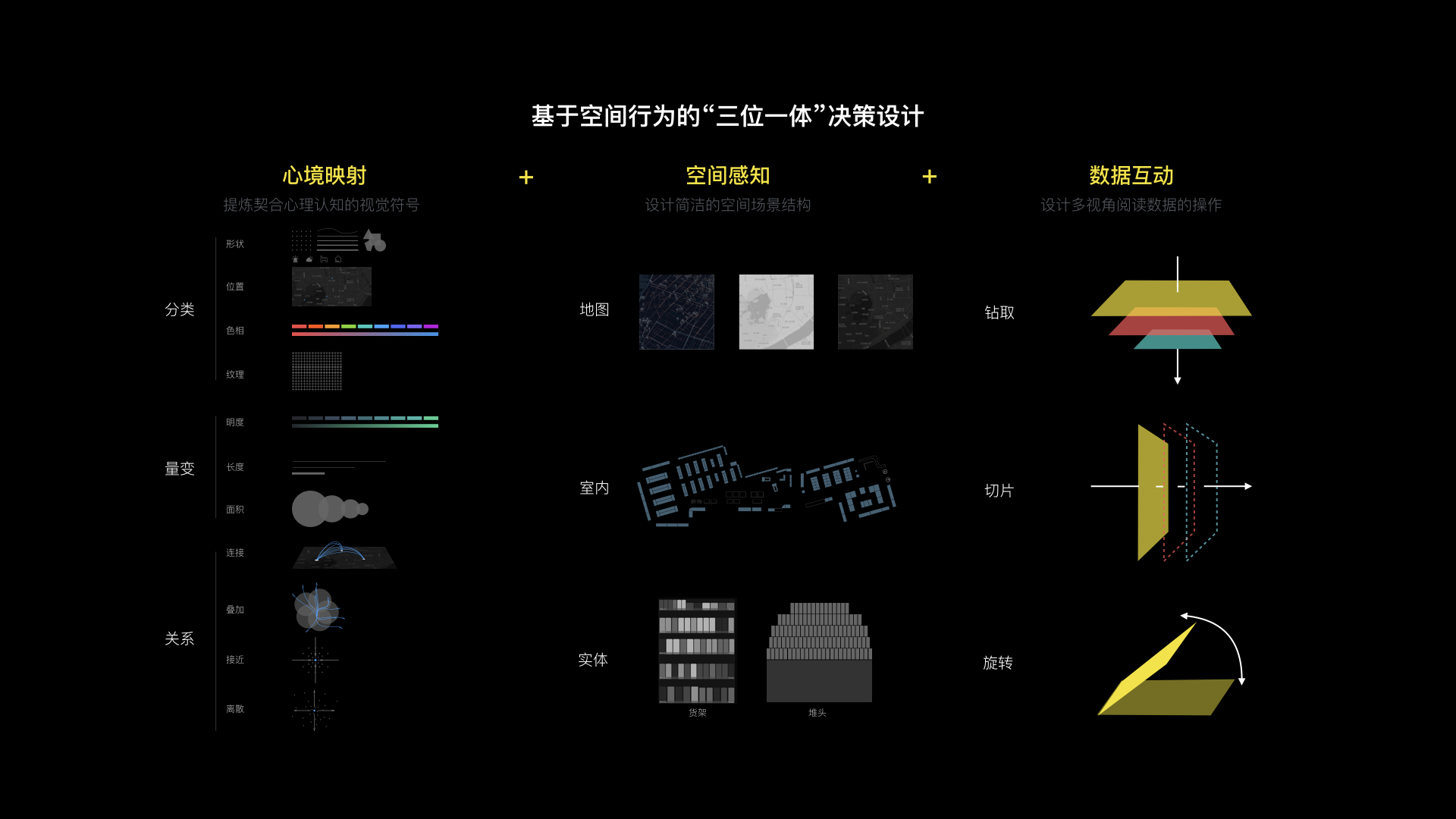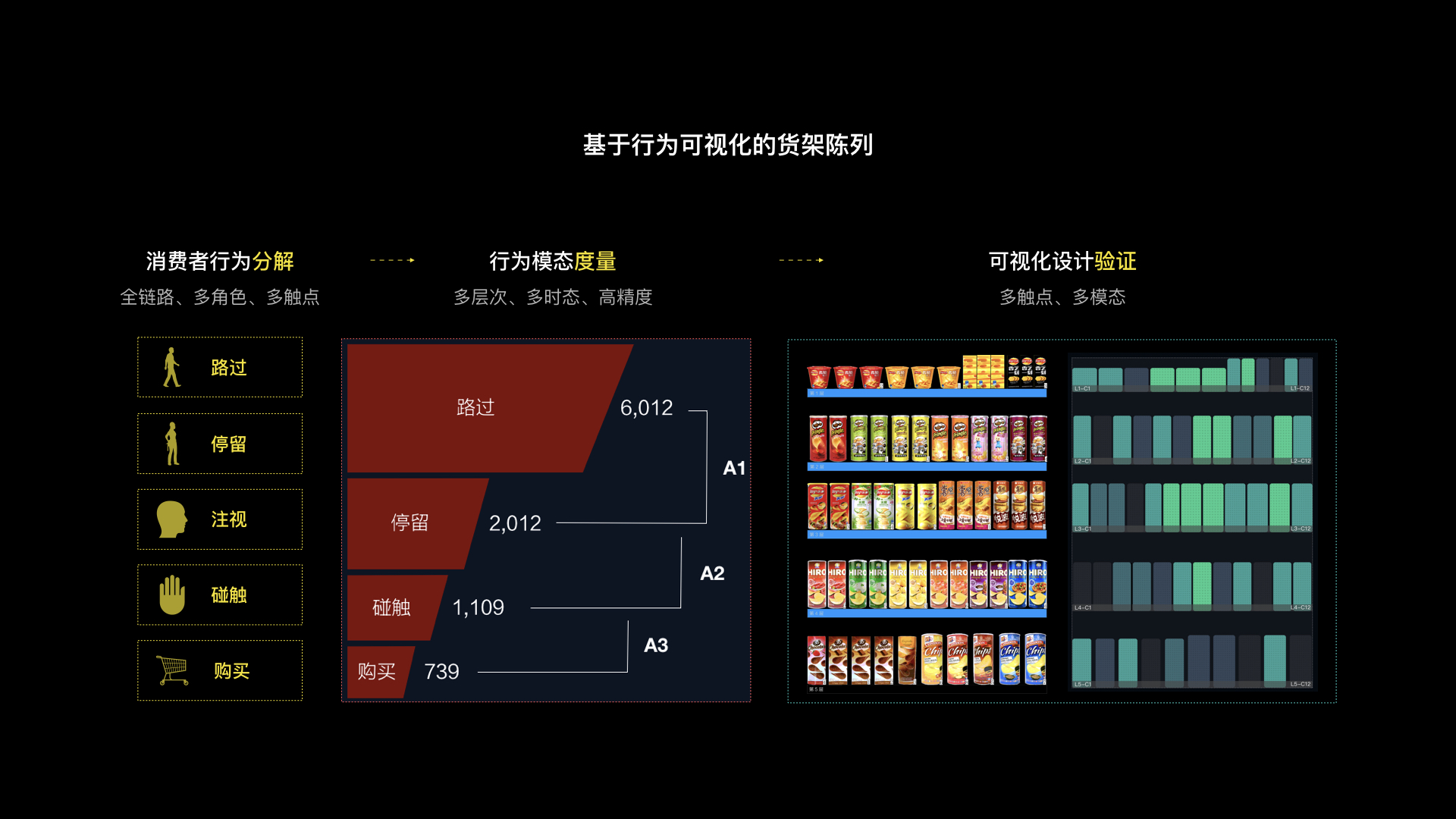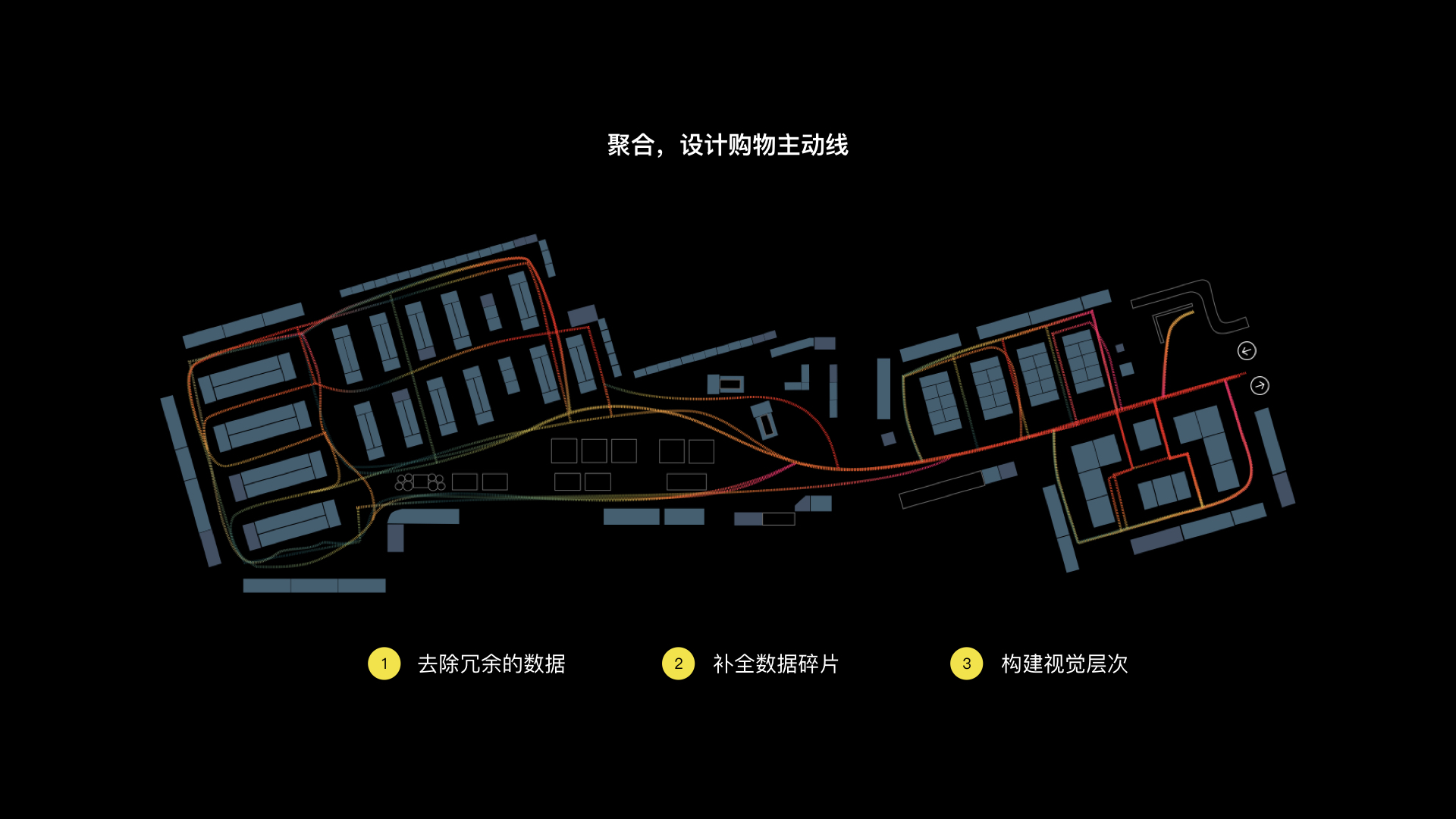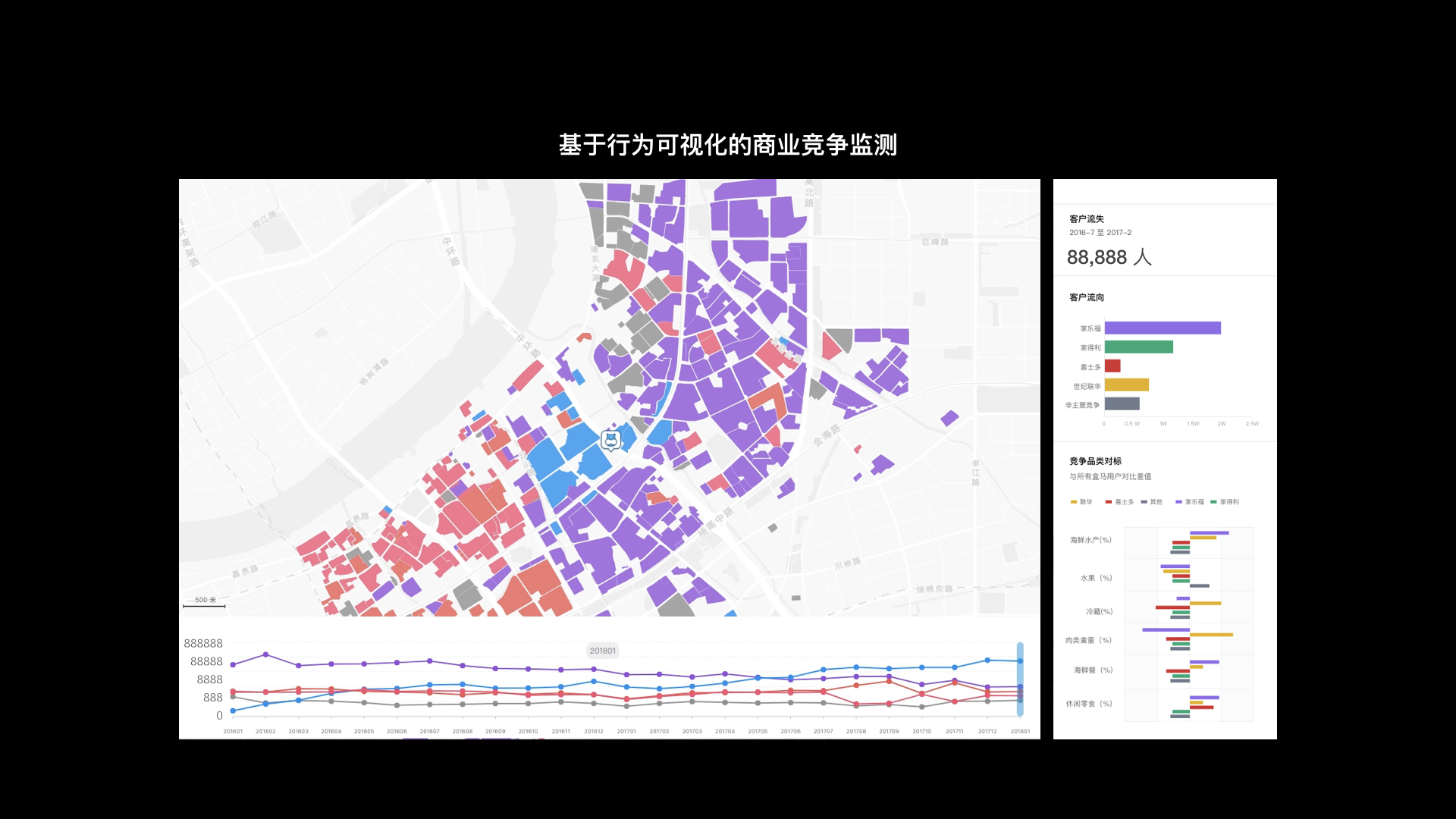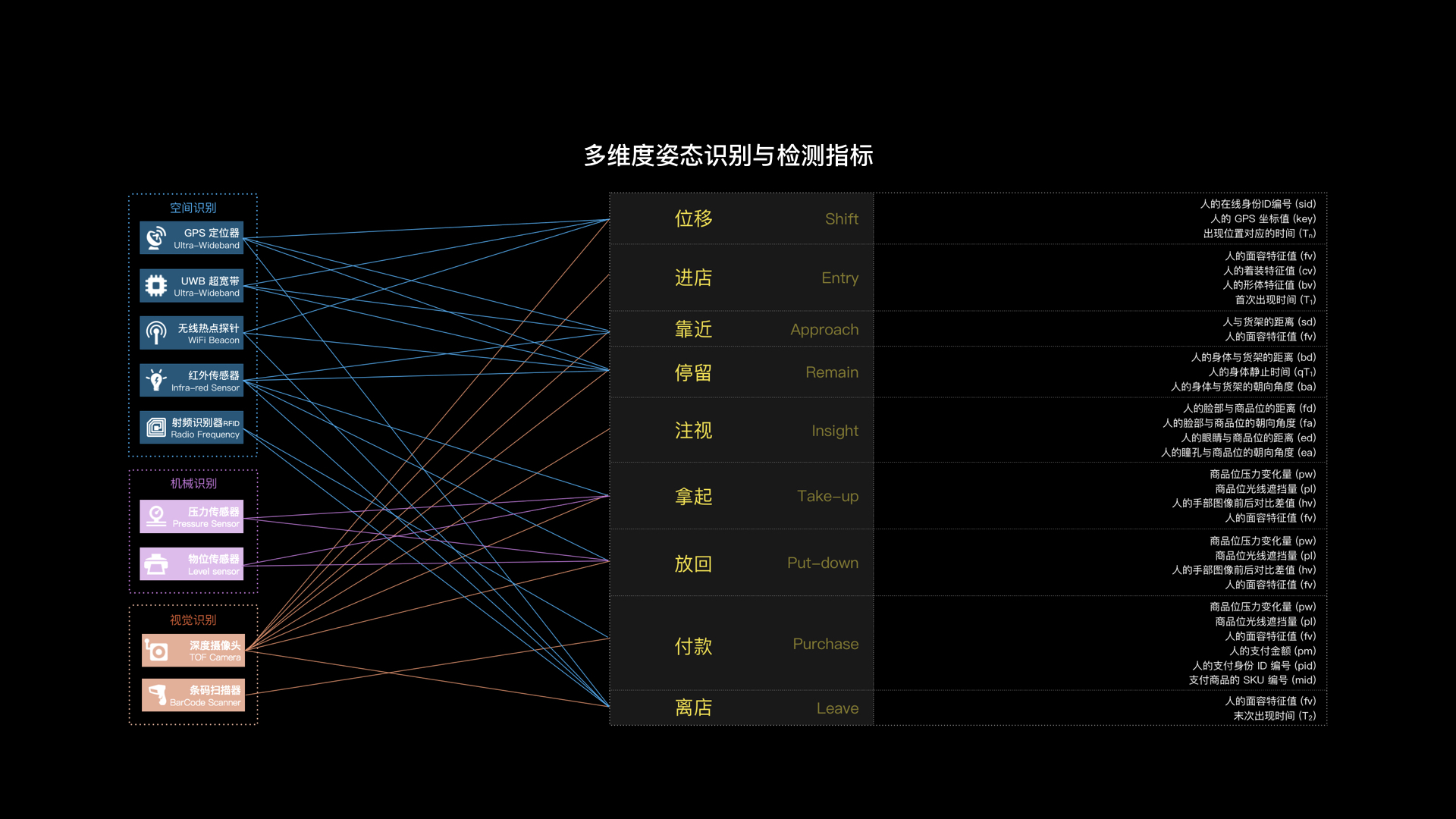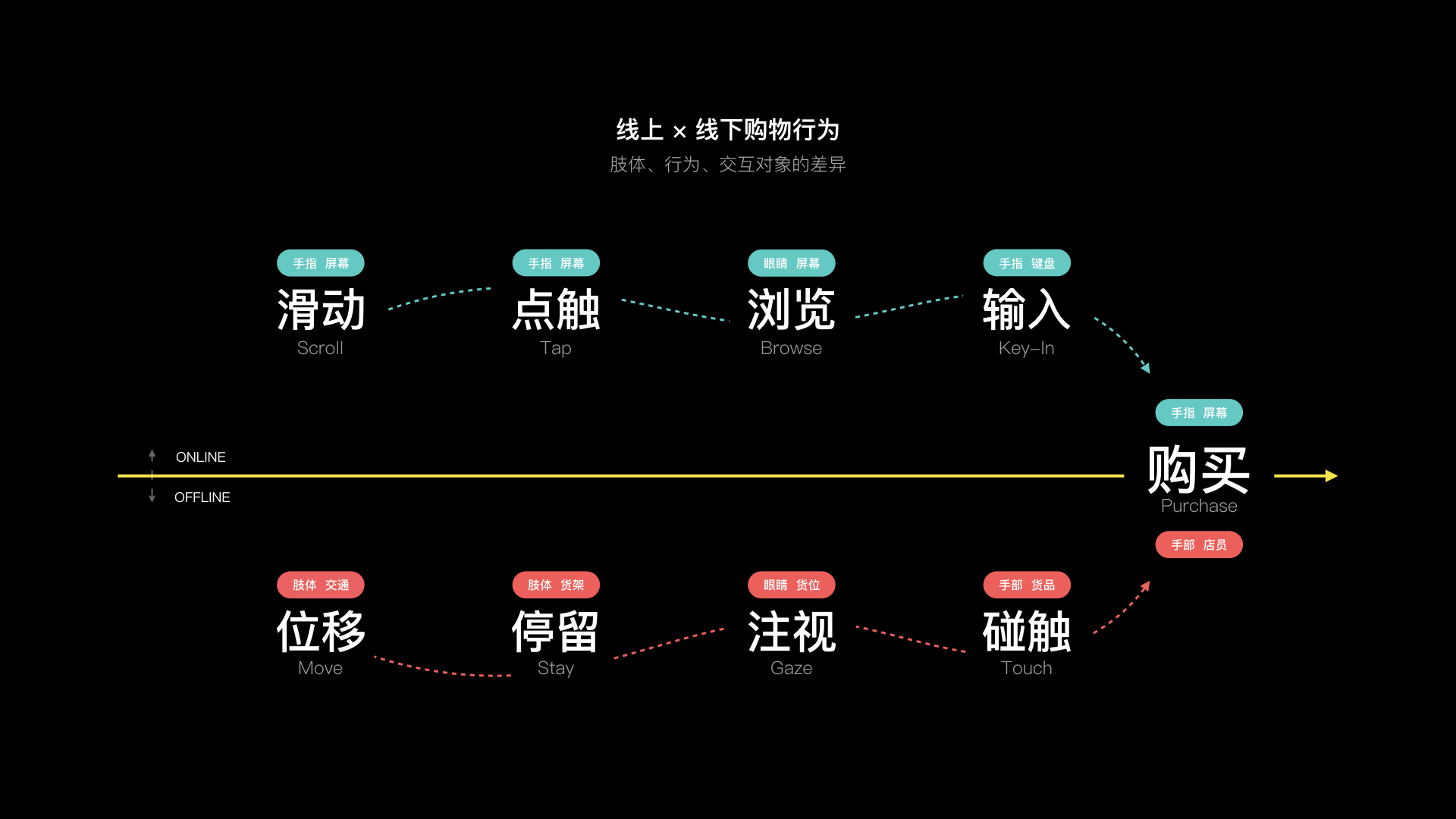-
 Li Mingfu
Alibaba International UED
Interactive Design Expert
Li Mingfu
Alibaba International UED
Interactive Design Expert
-

Yang Guangtao Alibaba‘s international User experience department Senior interactive design
Three-dimensional perception and design application of consumer behaviors.
After years of accumulation, traditional Internet e-commerce providers have mature methods and systems to monitor and make design expressions of online consumer behaviors. But in the new retail era, they are more required to gain insight into offline consumer behaviors, which include the interaction between physical movements such as displacement, stay, gaze and touch and the fields and goods. Based on these behaviors, they need to, combined with online consumer portraits, do the full-link behavior associations, three-dimensionally describe consumer's dynamic trends, explore the overall interaction between consumers and brands, and provide accurate and intelligent empowering of business for building new retail sites, laying goods and operation through the method of decision-making experience design.
At the same time, we will teach our design methodologies in the field of behavior decision-making, and through the systematic design of the big data field, make the decision makers of data get the most three-dimensional decision perceptions from the perspective of mood experience, spatial perception and data interaction.
The specific contents include:
1. Three-dimension of data
1.1 Activity lines of consumers' online and offline spatial behaviors
1.2 Full-link dynamic trends of consumers’ brand interactions
1.3 Multi-dimensional gesture recognition and detection indexes
1.4 The depth of brand contact behind the behaviors
2. Precision of business
2.1 Redefine the business relationship between human fields & human goods
2.2 Redefine data
2.3 Site selection and decision-making based on the "triple" perceptions of behaviors
2.4 Field Activity Lines
3. Visualization of design
3.1 Visual design of spatial behaviors
3.2 "Trinity" decision-making design based on spatial behaviors
3.3 Hierarchy and principles of spatial behavior decision designs: behavior layer, combination layer, granular layer, raw material layer
1. Introduce the method for three-dimensionally collecting consumer behaviors through IOT devices in the context of new technologies
2. Introduce new retail areas and commercial application cases of consumer behavior data
3. The expression and design methods of consumers’ spacial behaviors
4. Workshop practices (what behaviors can be collected, what devices are used to collect, how to define behavioral indicators, how to apply to business scenarios)
5. Each group voice opinions and makes summaries
1. New retail practitioners
2. Internet industry designers
3. Big data product managers
1. Learn about consumers’ online and offline full-link and multi-terminal behavior paths in the context of new retail, three-dimensionally describe consumers’ activity lines
2. Learn about the commercial value and practical business cases of consumer behavior visualization
3. Learn the visual design methods of consumers’ offline behaviors
-
 李明福 - 空间行为决策设计方法
李明福 - 空间行为决策设计方法
-
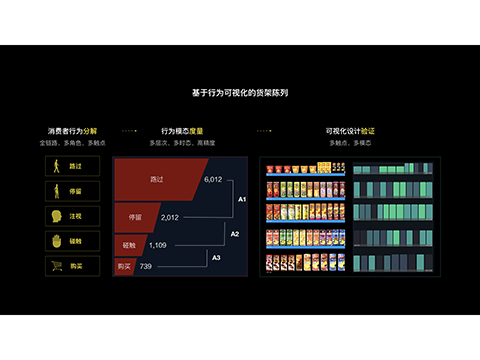 李明福 - 基于行为的货架陈列监测
李明福 - 基于行为的货架陈列监测
-
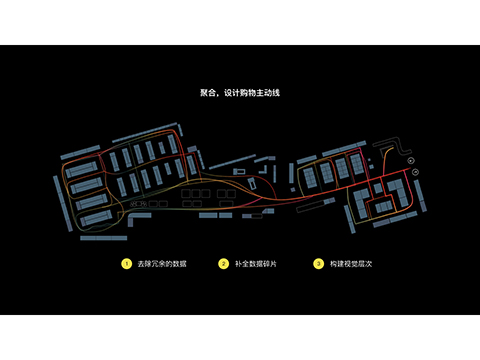 李明福 - 基于行为的动线监测
李明福 - 基于行为的动线监测
-
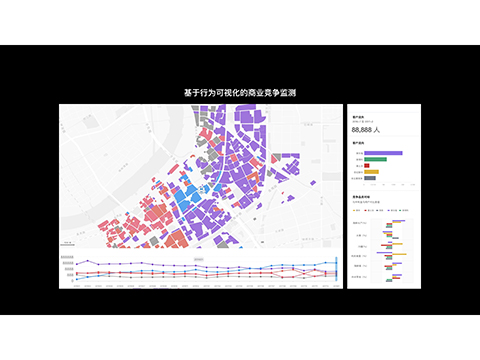 李明福 - 基于行为的商业竞争监测设计
李明福 - 基于行为的商业竞争监测设计
-
 李明福 - 大数据选址,空间决策感知设计
李明福 - 大数据选址,空间决策感知设计
-
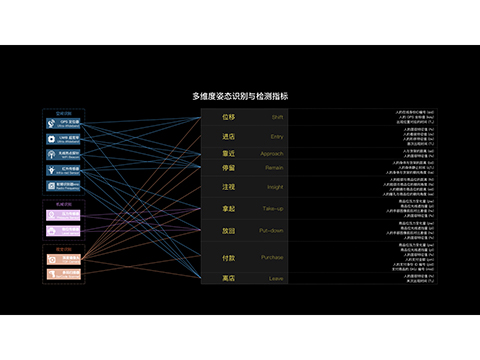 李明福 - 多维度姿态识别与检测指标设计
李明福 - 多维度姿态识别与检测指标设计
-
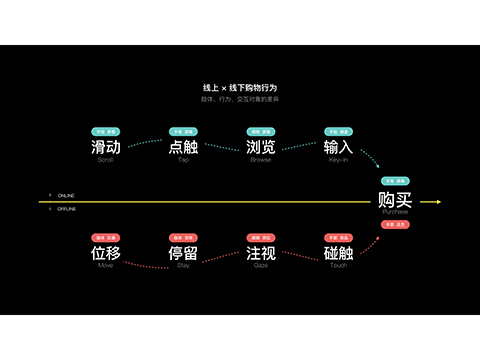 李明福 - 线上购物行为与线下购物行为差异
李明福 - 线上购物行为与线下购物行为差异






